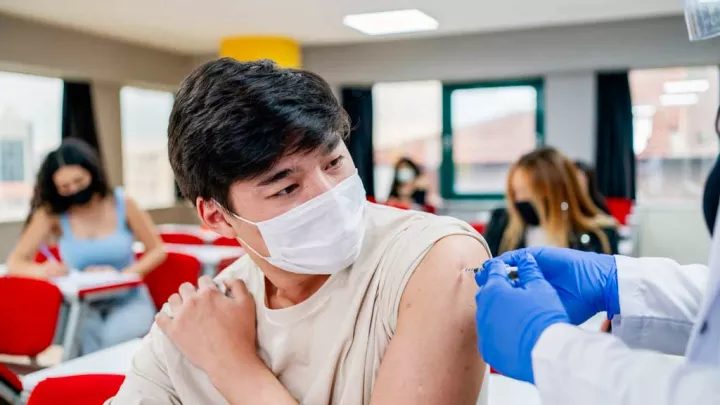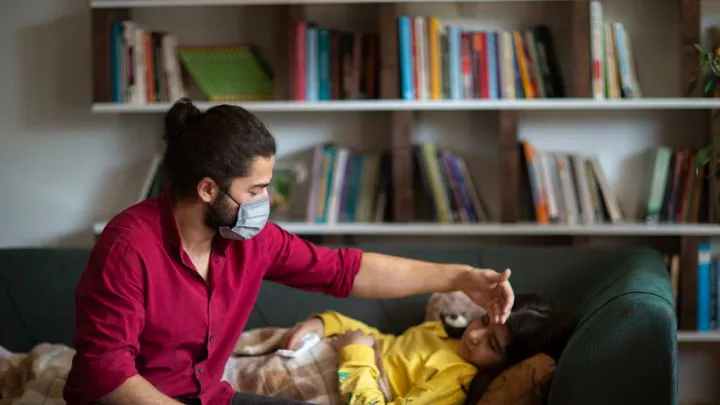
What You Should Know About Mpox
Since May 18, 2022, cases of mpox have been spreading in the United States, including California. On July 23, 2022, the World Health Organization (WHO) declared the current outbreak a public health emergency of international concern. We asked Erika Cheung, MSN, RN, CPN, Manager, Emergency Management in Quality Improvement and Patient Safety, to help explain everything families need to know about mpox, formerly called monkeypox.
What is mpox?
Mpox is a virus that is typically found in circulation within West and Central Africa. Occasionally, cases are exported by international travelers from countries in this region such as Nigeria and the Democratic Republic of Congo. In May 2022, there has been an increase of mpox cases not associated with international travel reported in several other countries and regions. After a sustained decline in cases, the 2022 outbreak was declared over in May 2023.
Since August 2024, there has been a new outbreak declared due to a significant increase in cases from the Democratic Republic of Congo and its neighboring countries in Central and East Africa.
What are the symptoms of mpox infection?
Patients with mpox often experience flu-like symptoms such as fever, headache and muscle aches, and swollen lymph nodes, followed by a pox-like rash on their face and/or body.
Symptoms usually begin five to 21 days after exposure, with the rash developing one to three days after the initial symptoms. Lesions generally appear at the same time and may develop all over the body, or only on specific body areas—especially the head/face, extremities, and palms or soles of the feet.
During recent outbreaks, the flu-like symptoms may begin after the rash appears, or may not happen at all. In addition, the rash lesions may not appear all at the same time.
Most people infected with mpox virus have a mild illness course that does not require specific treatments or therapy. But occasionally, severe cases may include other, more serious symptoms.
How is mpox virus spread?
People are considered infectious starting five days before rash onset and until all lesions have scabbed off. The virus is spread by:
- Direct contact with an infectious rash, scabs or body fluids
- Respiratory secretions during prolonged face-to-face contact
- Direct contact with contaminated materials (such as bedding, linen or clothing)
- Through the placenta in pregnant women
How do you test for mpox infection?
Mpox infection is diagnosed by testing a sample taken from skin lesions, not through a blood test.
How can I get my child tested for mpox?
Mpox testing is available at all major commercial laboratories, as well as CHLA. You can contact your primary care provider to find out where to get the test, and if the cost of testing is covered by your insurance.
What is the treatment for mpox infection?
Tecovirimat, also known as TPOXX or ST-246, is an antiviral drug that was approved by the FDA for the treatment of smallpox disease. The CDC has an Expanded Access Investigational New Drug protocol that allows use of tecovirimat for mpox.
This medication may not be necessary and is only recommended for people with severe disease, or for vulnerable populations who are at risk for developing severe disease.
Is there a vaccine to protect against mpox virus?
Jynneos, a live, nonreplicating vaccine, is approved by the Food and Drug Administration (FDA) for the prevention of smallpox and mpox in people over 18 years of age. The FDA has also authorized it for those under 18. The vaccination requires two subcutaneous injections given four weeks apart. No boosters or third doses are recommended at this time.
Who is eligible for mpox vaccination?
The Los Angeles County Department of Public Health recommends vaccination for anyone who may be at risk for, or who seeks additional protection from, mpox infection. Anyone who requests vaccination can receive it without having to disclose information about their personal risk. Visit the L.A. County Department of Public Health’s website to find the most up-to-date information on groups deemed at highest risk for mpox.
Is the mpox vaccine available at CHLA?
The JYNNEOS vaccine is offered, when requested, to some patients seen in Adolescent and Young Adult Medicine.
I’ve heard that this disease is mainly affecting the LGBTQ+ community. Can children get mpox?
While the disease may be more common in adults in certain communities, it can spread to children, especially those who have direct contact with someone who has the disease.
What if my child has a rash?
Not all rashes are caused by the mpox virus. Sometimes, the rash may be confused with other common childhood illnesses such as chickenpox or hand, foot and mouth disease, which is caused by the coxsackievirus. If you believe that your child may have mpox, please contact your pediatrician or primary care provider.
Are there long-term effects of having mpox?
According to the WHO, there can be complications from mpox, including secondary skin infections, bronchopneumonia, sepsis and encephalitis. If the infection affects the cornea of the eye, it can cause vision loss.


